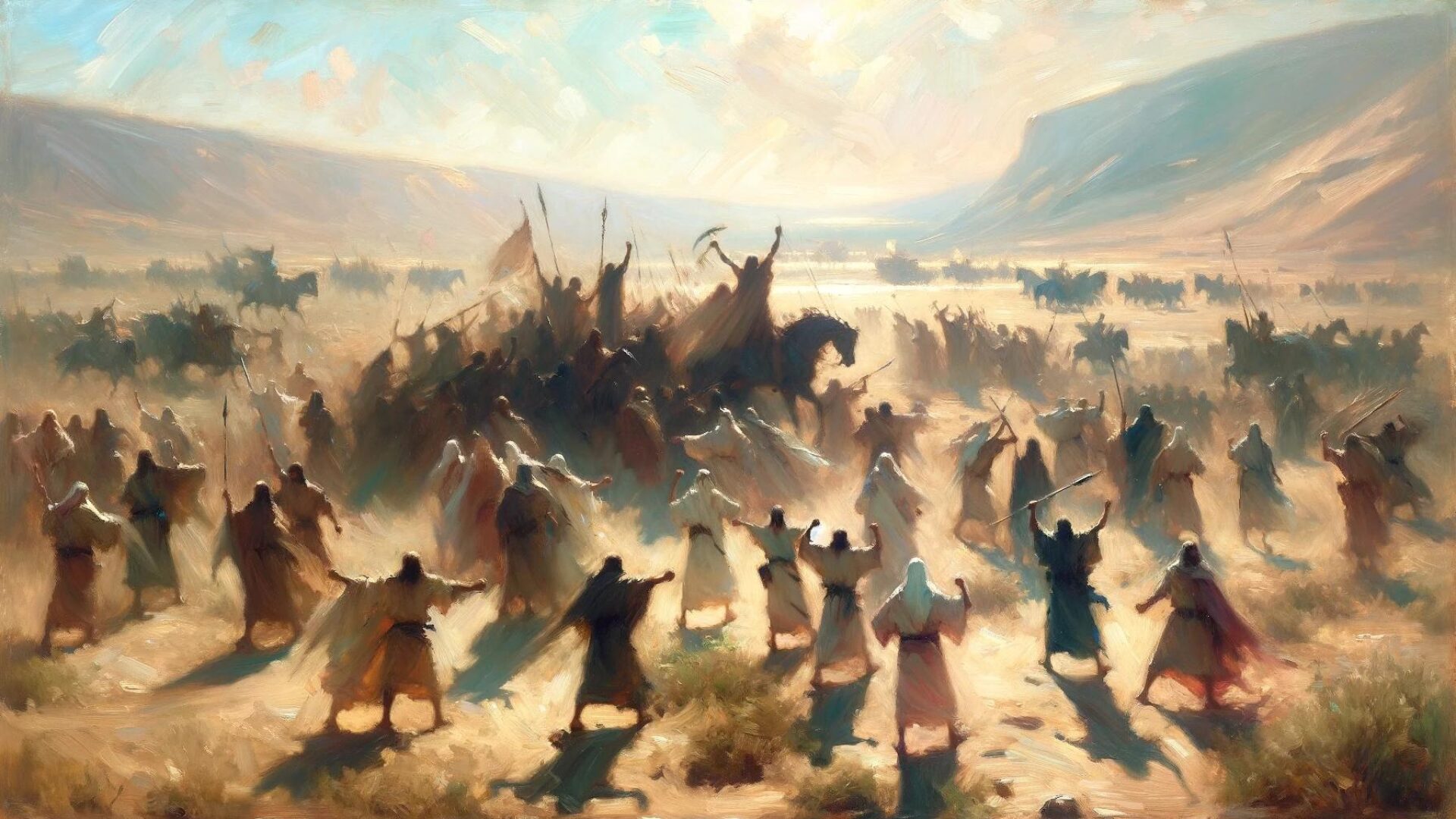Christianity is the world’s largest religion, with over 2 billion followers from diverse cultural backgrounds. Within Christianity, there are various denominations, each with its unique set of beliefs, practices, and traditions. Understanding these denominations is crucial for anyone seeking to learn about Christianity’s rich history and diversity. In this article, we will delve into the major Christian denominations, their history, beliefs, and practices.
Key Takeaways
- There are different types of Christian churches with varying beliefs and practices
- Christian denominations represent different interpretations of theology and practice
- Major Christian denominations include Catholicism, Protestantism, Eastern Orthodoxy, and Pentecostalism
Understanding Christian Denominations
Christianity is a diverse religion with multiple interpretations of theology and practice. These interpretations are represented by different denominations within the Christian church. Denominations can vary in their beliefs, worship styles, and church structures, but they all share the common foundation of Christianity.
The concept of denominations within Christianity is both a source of unity and division. They promote diversity and accommodate different spiritual needs, but they can also lead to disagreements and conflicts. Denominational differences are often the result of disagreements over interpretations of the Bible and other theological issues.
Despite these differences, Christian denominations share a common goal of spreading the teachings of Jesus Christ and promoting love and compassion. Recognizing the importance of these differences and understanding the beliefs of different Christian denominations is crucial in building a more cohesive and understanding community.
Major Christian Denominations
Christianity is divided into several major denominations, each with their own set of beliefs and practices. The following are some of the most popular Christian denominations:
| Denomination | Description |
|---|---|
| Catholicism | The Catholic Church is the largest Christian denomination, with over 1 billion followers worldwide. It is known for its hierarchical structure and sacramental theology, placing great emphasis on the authority of the pope and the priesthood. |
| Protestantism | Protestantism emerged during the 16th-century Reformation and has since expanded into numerous denominations, including Lutheranism, Anglicanism, Methodism, and many others. It emphasizes the priesthood of all believers, the importance of individual faith, and the interpretation of the Bible. |
| Eastern Orthodoxy | Eastern Orthodoxy is the second-largest Christian denomination, with its roots in the Byzantine Empire. It emphasizes the veneration of icons, theosis (or the process of becoming like God), and the sacraments. It is known for its mystical and liturgical traditions. |
| Pentecostalism | Pentecostalism is a relatively new Christian movement, emerging in the early 20th century. It emphasizes the importance of the Holy Spirit and spiritual gifts, including speaking in tongues and healing. It also has a charismatic worship style and an evangelistic mission. |
These four major denominations represent a diverse landscape of Christianity, each with its own rich history and unique traditions. While there are many other Christian denominations, these four are some of the most influential and widely recognized.
Catholic Church: A Pillar of Christianity
The Catholic Church is one of the oldest and largest Christian denominations in the world. With over 1.3 billion members, it is the largest single Christian denomination on the planet. The Catholic Church traces its origins back to the early days of Christianity, with the apostle Peter often identified as the first pope.
The hierarchical structure of the Catholic Church is centered on the pope, who is seen as the successor to Peter and the bishop of Rome. The pope is considered the spiritual leader of all Catholics, and his authority is respected and recognized by Catholics worldwide. The church is organized into dioceses, headed by bishops who oversee the spiritual and administrative affairs of their regions.
The sacraments are an essential part of Catholic worship and practice. They are considered visible signs of God’s grace and are believed to be necessary for salvation. The seven sacraments are Baptism, Confirmation, Eucharist, Penance, Anointing of the Sick, Holy Orders, and Matrimony. The Mass is the central act of Catholic worship, with the Eucharist as the pinnacle of the liturgy.
The Catholic Church has a rich tradition of liturgical practices, art, and music. They are seen as vital components of Catholic worship and are meant to elevate the soul and inspire the faithful. The Catholic Church has produced some of the world’s most magnificent artworks, including paintings, sculptures, and architecture. Other distinctive features of Catholicism include the veneration of Mary, the mother of Jesus, and the saints, who are believed to be in heaven and can intercede with God on behalf of the faithful.
Catholicism has faced several issues and controversies throughout history, including the Protestant Reformation, the Inquisition, and the sexual abuse scandals. However, it remains a vital and influential force in Christianity today, with a global reach and a loyal following.
Protestantism: The Reformation and Beyond
Protestantism is a major branch of Christianity that emerged in the 16th century as a result of the Protestant Reformation. This movement began as a challenge to the authority and practices of the Catholic Church, which had dominated Western Christianity for centuries.
The main beliefs of Protestantism include the authority of the Bible as the only source of religious authority, the doctrine of justification by faith alone, and the priesthood of all believers. Protestantism is known for its diversity, with various denominations like Lutheranism, Anglicanism, Methodism, and Baptist, each with its own unique beliefs, practices, and traditions.
One of the most significant figures of the Protestant Reformation was Martin Luther, a German monk who challenged the Catholic Church’s sale of indulgences and other practices. Luther emphasized the idea of salvation through faith alone and translated the Bible into German, making it accessible to the common people.
Denominations of Protestantism
Lutheranism is the first Protestant denomination, which originated in Germany and emphasizes the importance of sacraments in worship, particularly baptism and the Eucharist. Anglicanism, on the other hand, originated in England and maintains some Catholic traditions, such as the liturgy and the use of sacraments in worship. Methodism, a Christian movement founded by John Wesley in the 18th century, emphasizes personal holiness, evangelism, and social justice.
Protestant worship styles vary widely, from traditional hymns to contemporary music, with some churches adopting a more casual and informal approach to worship. In contrast to the Catholic Church’s hierarchical structure, most Protestant denominations follow a democratic system of governance, with members having a say in church matters.
Protestantism has had a significant impact on Christianity, transforming the religious landscape and promoting the idea of individual interpretation and religious freedom. Today, Protestants make up the largest religious group in the United States, with over 40% of the population identifying as such.
Eastern Orthodoxy: Ancient Traditions and Icons
Eastern Orthodoxy is one of the oldest branches of Christianity and dates back to the early days of the Church. Its followers are known for their emphasis on ancient traditions and their use of icons in worship. Eastern Orthodoxy is practiced in many countries around the world, with the majority of its followers living in Eastern Europe, Greece, and the Middle East.
One of the most distinctive features of Eastern Orthodoxy is the role of the bishop, who is seen as the spiritual leader of the church and has the power to ordain new priests, consecrate new churches, and perform other important religious functions. The bishop is assisted by a group of priests, who are responsible for leading worship services and providing spiritual guidance to the faithful.
Eastern Orthodox worship is characterized by its rich liturgical traditions, which include the use of incense, candles, and elaborate vestments. Icons, or religious paintings, play an important role in Orthodox worship, with each church having a collection of beautiful icons that depict scenes from the life of Christ, the Virgin Mary, and the saints.
In Orthodox worship, there is a strong emphasis on the mystical aspect of Christianity, and many Orthodox believers speak of having mystical experiences during worship services. These experiences are thought to be a direct result of the Holy Spirit’s presence in the church.
One of the defining moments in Eastern Orthodox history was the Great Schism of 1054, which resulted in the split between Eastern Orthodoxy and Western Christianity (Catholicism). Despite this split, Eastern Orthodoxy has continued to thrive and has made significant contributions to Christian theology and worship.
The Structure of Eastern Orthodox Churches
Eastern Orthodox churches are typically structured in a similar way to other Christian denominations, with parish churches being the most common form of worship. However, there are some differences in the way that Orthodox churches are organized and operated.
Each Orthodox church is governed by a bishop, who is responsible for overseeing the spiritual life of the community. The bishop is assisted by a council of presbyters, or priests, who help to administer the church and provide spiritual guidance to the faithful.
Orthodox churches are also known for their strong sense of community, with members often feeling a strong sense of belonging to the church and taking an active role in its life. This can include participating in charitable works, attending worship services regularly, and volunteering for various church activities.
Pentecostalism: The Holy Spirit and Charismatic Worship
Pentecostalism is a Christian movement that emphasizes the role of the Holy Spirit in daily life and worship. It emerged in the early 20th century, primarily in the United States, and has since spread globally. Pentecostalism is characterized by a fervent belief in spiritual gifts, speaking in tongues, and the baptism of the Holy Spirit. Pentecostals are known for their enthusiastic, charismatic worship style, which often includes raising hands, clapping, and dancing.
The Pentecostal movement is diverse, with many different denominations and independent churches. Some of the largest Pentecostal denominations include the Assemblies of God, the Church of God in Christ, and the International Pentecostal Holiness Church. Many Pentecostal churches also belong to larger networks or organizations, such as the Pentecostal World Fellowship.
Pentecostalism has played a significant role in the growth of Christianity worldwide, particularly in regions like Africa, Latin America, and Asia. Pentecostal churches are often known for their evangelistic efforts, outreach to the poor, and emphasis on personal transformation through faith.
The Holy Spirit and Charismatic Worship
Pentecostals believe in the power of the Holy Spirit to work in the lives of believers and in the church. They stress the importance of spiritual gifts, such as speaking in tongues, prophecy, and healing. Many Pentecostals believe that speaking in tongues is evidence of receiving the baptism of the Holy Spirit, which they view as a distinct experience from salvation. They also believe that the Holy Spirit can empower believers to live holy lives and to be effective witnesses for Christ.
Pentecostal worship is often characterized by its emotional intensity and its focus on the power of God. Pentecostals believe that worship is a dynamic encounter with God, and they often express their joy and gratitude through exuberant singing, dancing, and clapping. Many Pentecostal churches also incorporate elements of charismatic worship, such as spontaneous prayer, prophetic utterances, and laying on of hands for healing.
Some critics of Pentecostalism argue that its emphasis on emotional experiences and supernatural phenomena can detract from the centrality of Christ and the gospel message. However, Pentecostals maintain that their beliefs and practices are grounded in Scripture and that they seek to live out the teachings of Jesus in their daily lives.
Conclusion
Christianity is a diverse and multifaceted religion, with many interpretations and practices. Understanding the differences between Christian church denominations can be a rewarding and enlightening experience, as it allows for a deeper appreciation of the history, beliefs, and traditions of each denomination.
While each denomination has its unique characteristics and teachings, there is also a sense of unity among Christians, who share a common belief in Jesus Christ as their savior. This shared faith transcends denominational boundaries and serves as a unifying force within the Christian community.
As you explore different Christian church denominations, we encourage you to keep an open mind and heart, and to seek out a spiritual path that best aligns with your beliefs and values. Whether you choose to worship in a Catholic, Protestant, Eastern Orthodox, or Pentecostal church, or in any other Christian sect, may you find peace and fulfillment in your spiritual journey.
FAQ
Q: What are Christian church denominations?
A: Christian church denominations are different branches or groups within Christianity that have distinct beliefs, practices, and organizational structures.
Q: Why are Christian denominations important?
A: Christian denominations are important because they represent diverse interpretations of theology and allow for the accommodation of different spiritual needs. They also promote diversity within Christianity and contribute to the overall understanding of the faith.
Q: What are some major Christian denominations?
A: Some major Christian denominations include Catholicism, Protestantism, Eastern Orthodoxy, and Pentecostalism.
Q: What is the Catholic Church?
A: The Catholic Church is one of the oldest and largest Christian denominations. It has a hierarchical structure led by the pope and focuses on sacraments and liturgical practices.
Q: What is Protestantism?
A: Protestantism is a branch of Christianity that originated from the Protestant Reformation. It emphasizes the priesthood of all believers and includes various denominations such as Lutheranism, Anglicanism, and Methodism.
Q: What is Eastern Orthodoxy?
A: Eastern Orthodoxy is a Christian denomination that has its roots in the Eastern part of the Roman Empire. It places importance on liturgical rituals, icons, and mysticism.
Q: What is Pentecostalism?
A: Pentecostalism is a charismatic Christian movement that emphasizes the work of the Holy Spirit, spiritual gifts, and dynamic worship styles.





